

You are using an out of date browser. It may not display this or other websites correctly.
You should upgrade or use an alternative browser.
You should upgrade or use an alternative browser.
Clover
- Thread starter dbltree
- Start date
rackhunter
Member
Can I use red clover instead of berseem in the spring and still till under In July to plant brassicas and August rye?
Can I use red clover instead of berseem in the spring and still till under In July to plant brassicas and August rye?
Yep. the Berseem is going to grow faster, etc BUT the red will work.
I used DT clover mix. Could not be happier.
Wish I had a dollar for every time I heard that! you'll never go wrong with DT advice. Looking great and I am sure you'll be pulling some deer in and giving some great nutrition, etc.
skyleralan
PMA Member
I have waited to put clover in with the nice weather and glad I did, I knew we would have some possible freezing still. I plan on getting it planted this Sunday and at the latest, by the end of this month.
The nice weather just got everyone in the mood to get things done.
The nice weather just got everyone in the mood to get things done.
skyleralan
PMA Member
Guys, I don't think a light frost or two at this time will decimate your new clover plantings. It might stunt them a bit, but I wouldn't be overly concerned. The extended drought last summer was way tougher on clover than a night or two of 30 degrees IMO.
Well how about this, what is the latest you should put clover in, in the Spring and still give it a goo chance to get some early growth before the warm summer months, mid May?
dbltree
Super Moderator
I see that for the till under spring planting, the reccomended clovers are berseem and crimson. Is there one preferred over the other and if so what are advantages or disadvantages of either?
In all honesty there is probably little difference...each is priced differently but one requires more seed then the other, thus offsetting the price difference. That said I think berseem is known to fix a little more nitrogen and biomass then crimson clover but those things are hard to substantiate. Plant whichever you wish or like me...some of both...
April 13th, 2012
The early spring weather has folks out planting clover and wondering if the hard freezes will harm the tiny seedlings? Generally white, red and even annual clovers like crimson can tolerate some hard frosts and even an outright freeze or two berseem clover however is not very cold tolerant. I generally hold off planting oats and berseem until late April in my area and even into early May depending on the weather. Those who plant IWC clover seed should be aware that 30% of it is berseem so avoid planting too early or in the fall...it won't affect the white clovers in the mix but you risk throwing away 30% of your expensive seed mix if planted at the wrong time.
Never underestimate the power of white clover even in relatively small amounts and it should be a part of every feeding area where it can be grown. I like to plant around the field edges even and especially when the field is an ag crop field if there is any unused edge area.
In this crop field the edge is relatively steep and left in grass so we are taking advantage of this edge to establish white clover.
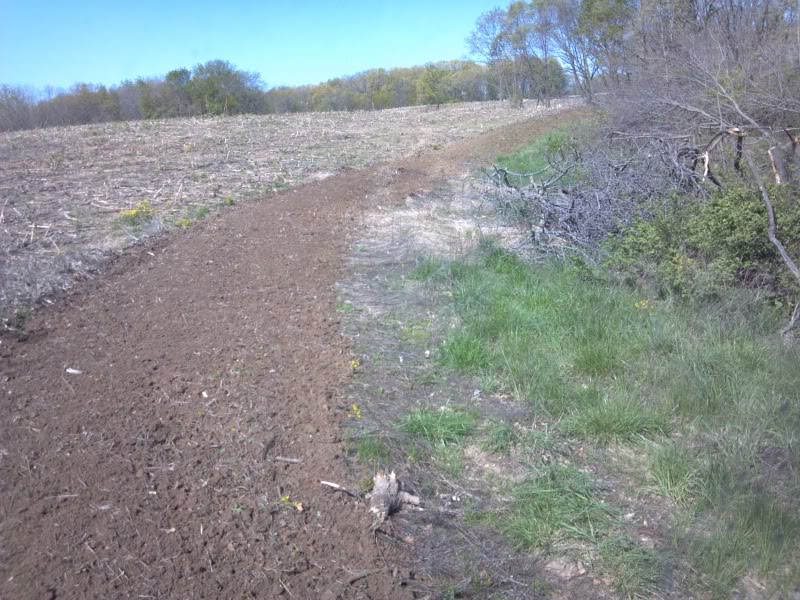
I prefer to establish perennial clovers in the fall but crops make it difficult access this field...so spring it is! I spread 400#'s of 6-28-28 and 400#'s of pellet lime and tilled it in. Note the timber edge has been edge feathered and on;y a couple openings remain leading out to the field and clover
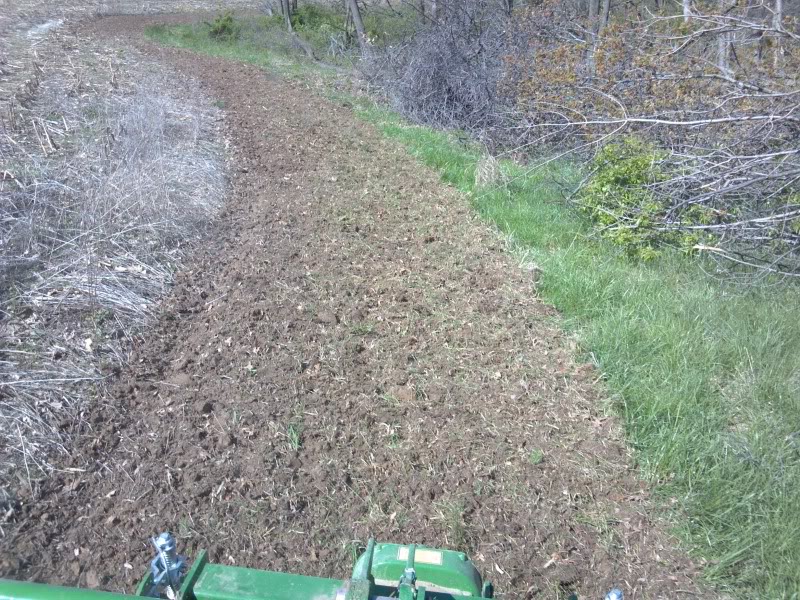
The edge leads into a small clearing so we'll plant that area at the same time thus creating a safe area deer are likely to enter before dark and a food source that will provide nearly year around attraction...when added to the ag crops it makes an outstanding combination...
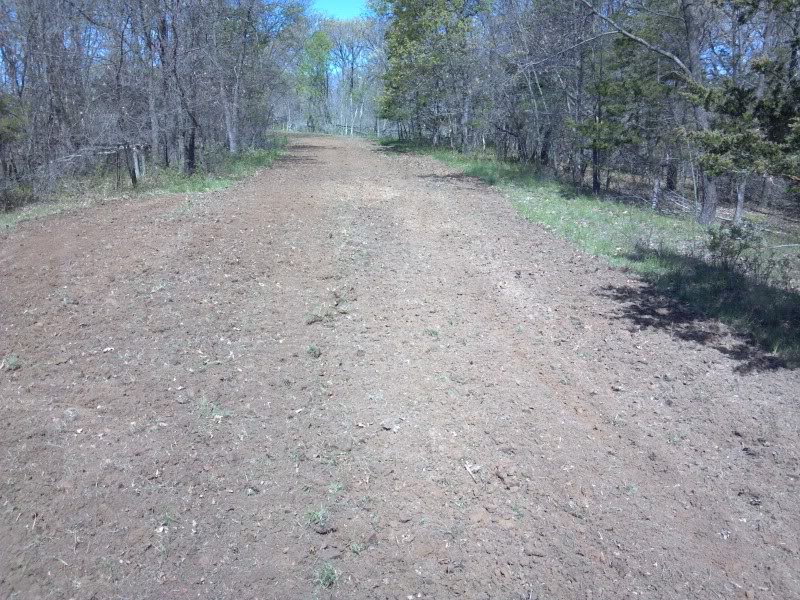
Speaking of clearings...a friend of mine got a dozer in to make a beautiful 2 acre feeding area
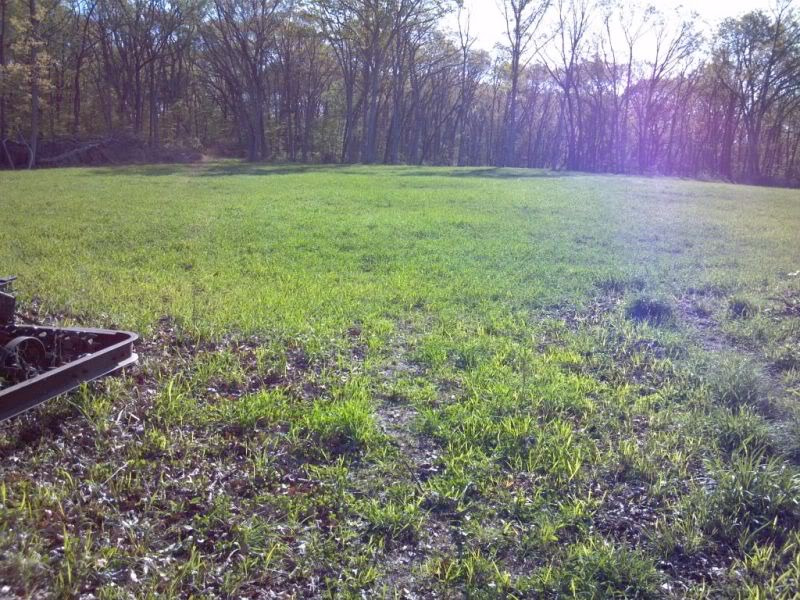
Often people make the mistake of burning the dozed up log piles but in this case the landowner wisely chose to use the trees to block off multiple openings using the same principle as edge feathering.
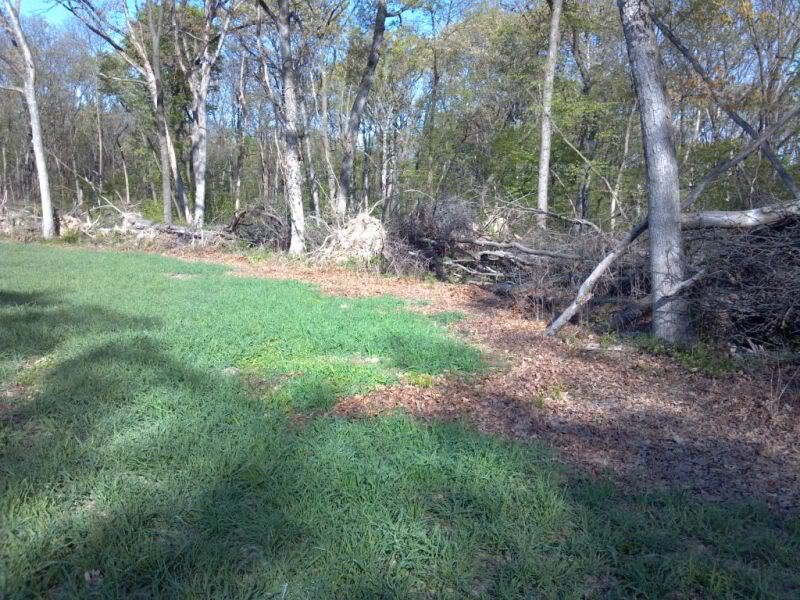
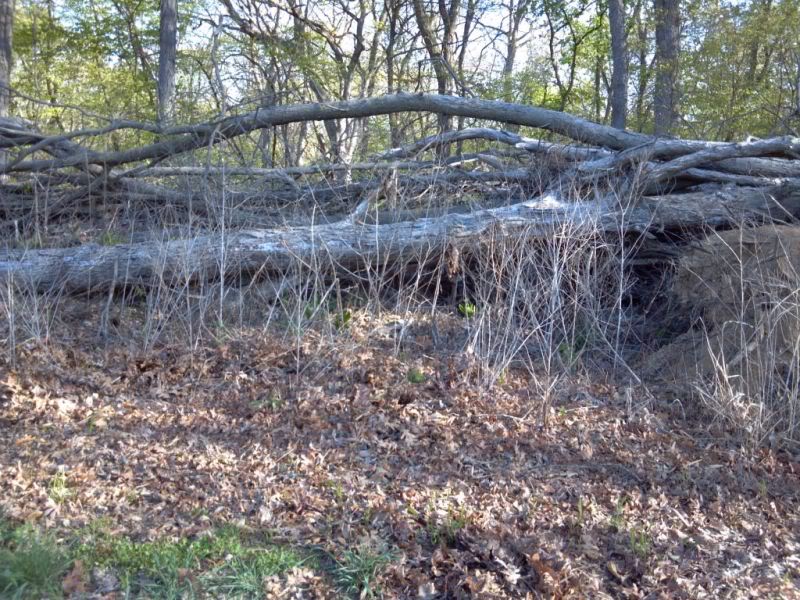

Then to further screen the plot we planted red cedars around the perimeter
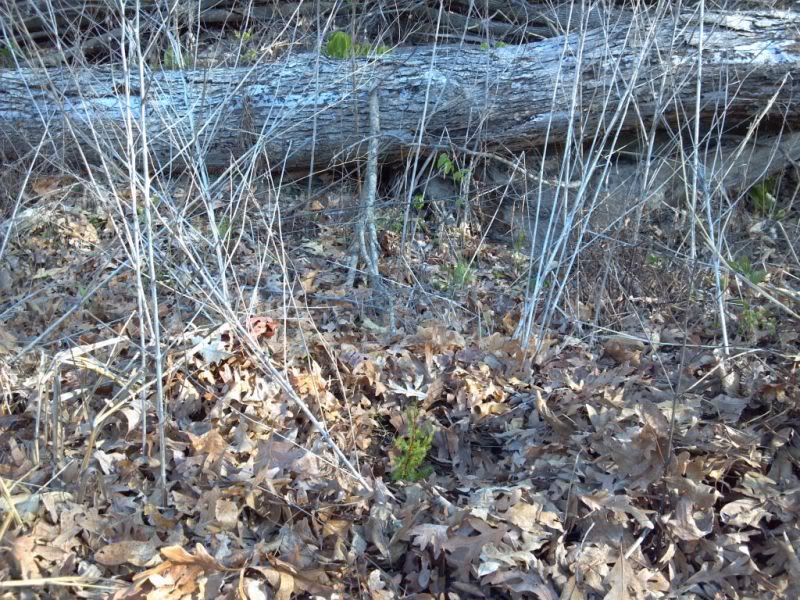
He sowed the field to winter rye and white clover last fall

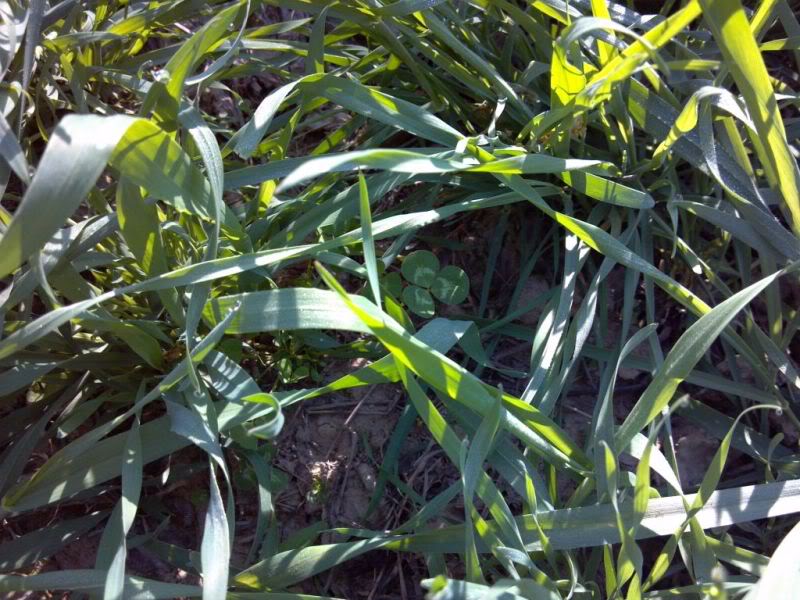
and deer have been beating a path to it ever since

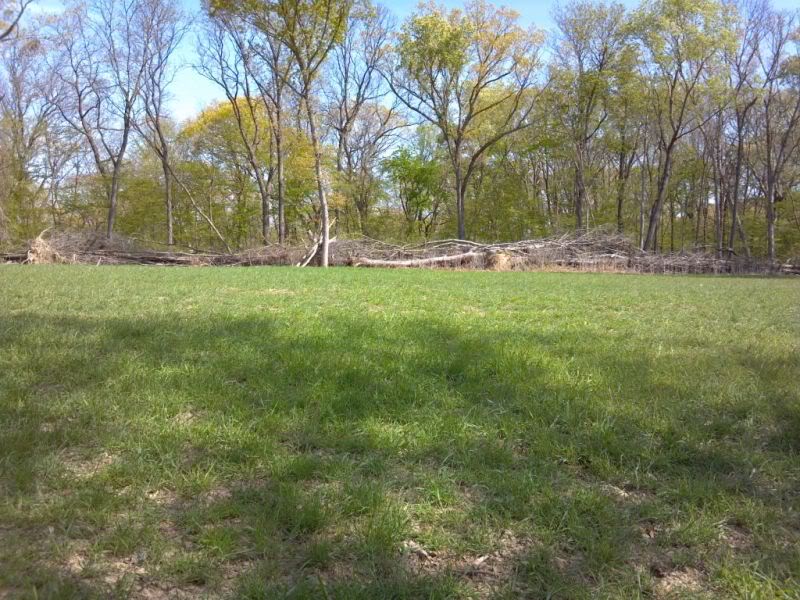
Regardless if it is a narrow field edge, and odd corner or a new clearing...make sure clovers are a part of you habitat program
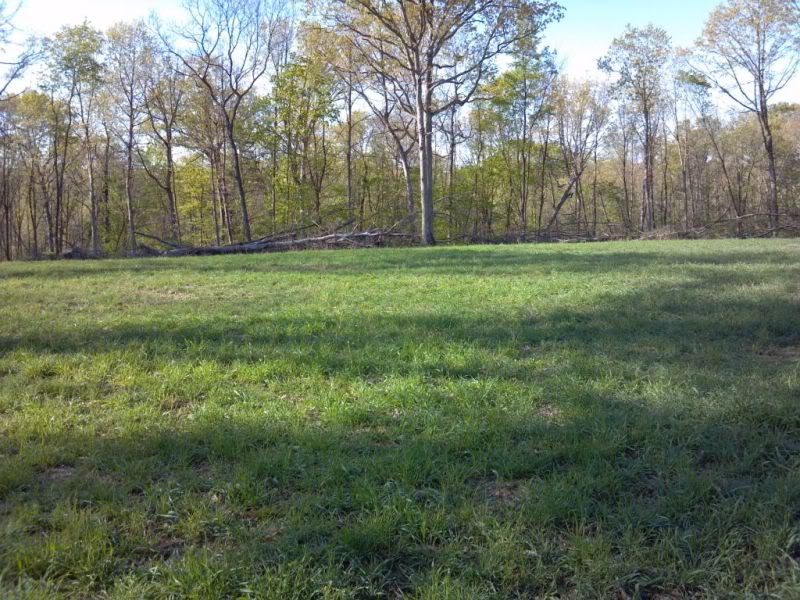
Where ever possible add the right crop combinations that along with clover, provide year around food sources in each feeding area...use whatever combination is right for you but the following combination has worked very well for us...
Plant ALL in one plot in strips or blocks
Alice (or comparable) white clover 10% of plot, in odd areas, corners or simply divide the plot with clover strips
Brassicas in 45% of plot
Purple Top Turnips 3#
Dwarf Essex Rape 2#
GroundHog Forage radish 5#
Plant in mid to late July in most Midwest states, or 60-90 days before your first killing frost. Follow the dead brassicas with oats and berseem or crimson clover in mid spring.
Cereal Grain combo in 45% of plot
Winter rye 50-80#'s per acre (56#'s = a bushel)
Spring oats 80-120#'s per acre (32#'s = a bushel)
Austrian Winter Peas or 4010/6040 Forage peas 20-80#'s per acre
Red Clover 8-12#'s per acre or white clover at 6#'s per acre
Groundhog Forage Radish 5#'s per acre
Plant in late August to early September
Rotate the brassicas and rye combo each year
rackhunter
Member
Existing Clover plots
Paul, I have a couple of 1 to 1.5 acrer food plots that are currently in clover that i planted last spring. I would like to start following your crop rotation but have some questions.
When late July comes around do I have to spray the clover to kill it or just till it under to plant turnips?
Once tilled up can I plant the same day or wait for a period?
Now when late August comes around and time to plant Rye and red clover what is the process? Till under or do i need to spray first.
Can you plant clover right away again or will this not work running clover again in the same plot without another crop in between.
I know Alfalfa has to be tilled under and plant something else before you can re-seed to alfalfa.
Thanks has always!!!!!!
Paul, I have a couple of 1 to 1.5 acrer food plots that are currently in clover that i planted last spring. I would like to start following your crop rotation but have some questions.
When late July comes around do I have to spray the clover to kill it or just till it under to plant turnips?
Once tilled up can I plant the same day or wait for a period?
Now when late August comes around and time to plant Rye and red clover what is the process? Till under or do i need to spray first.
Can you plant clover right away again or will this not work running clover again in the same plot without another crop in between.
I know Alfalfa has to be tilled under and plant something else before you can re-seed to alfalfa.
Thanks has always!!!!!!
tommyls1313
Member
Paul I planted your WR/white clover mix last fall then frost seeded more white clover 1st weekend of march. I went out to my plot for the first time since frost seeding today. My clover is thick in the knee high WR but my plot is covered with a yellow top weed. What's your suggestion on getting rid of the yellow weeds? Mowing or spraying? Thanks so much for your knowledge
rackhunter
Member
After tilling clover under question
Paul, so after tilling the clover under can I re seed with turnips or wr/clover thee same day or do I have to wait anYod let the old clover break down or decompose?
Paul, so after tilling the clover under can I re seed with turnips or wr/clover thee same day or do I have to wait anYod let the old clover break down or decompose?
skyleralan
PMA Member
Brian got me my seed yesterday, all I need is like 4-5 days with no rain to get everything prepared and then broadcast my seed! It is a little later than I would like, but at the same time, Spring definitely came much earlier this year! I just hope May isn't a super dry month this year!
I planted berseem/oats almost 25 days ago. Oats are looking great to me.(3-4")
Clover however looks sparse at best and is nothing more than very small starts.
I did plant some alice as well and it is the same as berseem as far as just small starts. Is this normal,or did our couple frosts hurt me?
Clover however looks sparse at best and is nothing more than very small starts.
I did plant some alice as well and it is the same as berseem as far as just small starts. Is this normal,or did our couple frosts hurt me?
dbltree
Super Moderator
What's your suggestion on getting rid of the yellow weeds?
Sounds like mustard but either way get it clipped off before it goes to seed and if still a problem you might spray with 2-4DB Butyrac 200 (not 2-4D)
after tilling the clover under can I re seed with turnips or wr/clover thee same day or do I have to wait anYod let the old clover break down or decompose?
Yes...
I planted berseem/oats almost 25 days ago. Oats are looking great to me.(3-4")
Clover however looks sparse at best and is nothing more than very small starts.
I did plant some alice as well and it is the same as berseem as far as just small starts. Is this normal,or did our couple frosts hurt me?
We had more then a frost, we had a hard freeze down to 23 degrees so it's possible to experience injury but that's only if they came up before the freeze?
Part of it is warm then cold weather, wet then dry...not really consistent so I suspect that is why the inconsistent germination.
Give it til May and see what happens...


